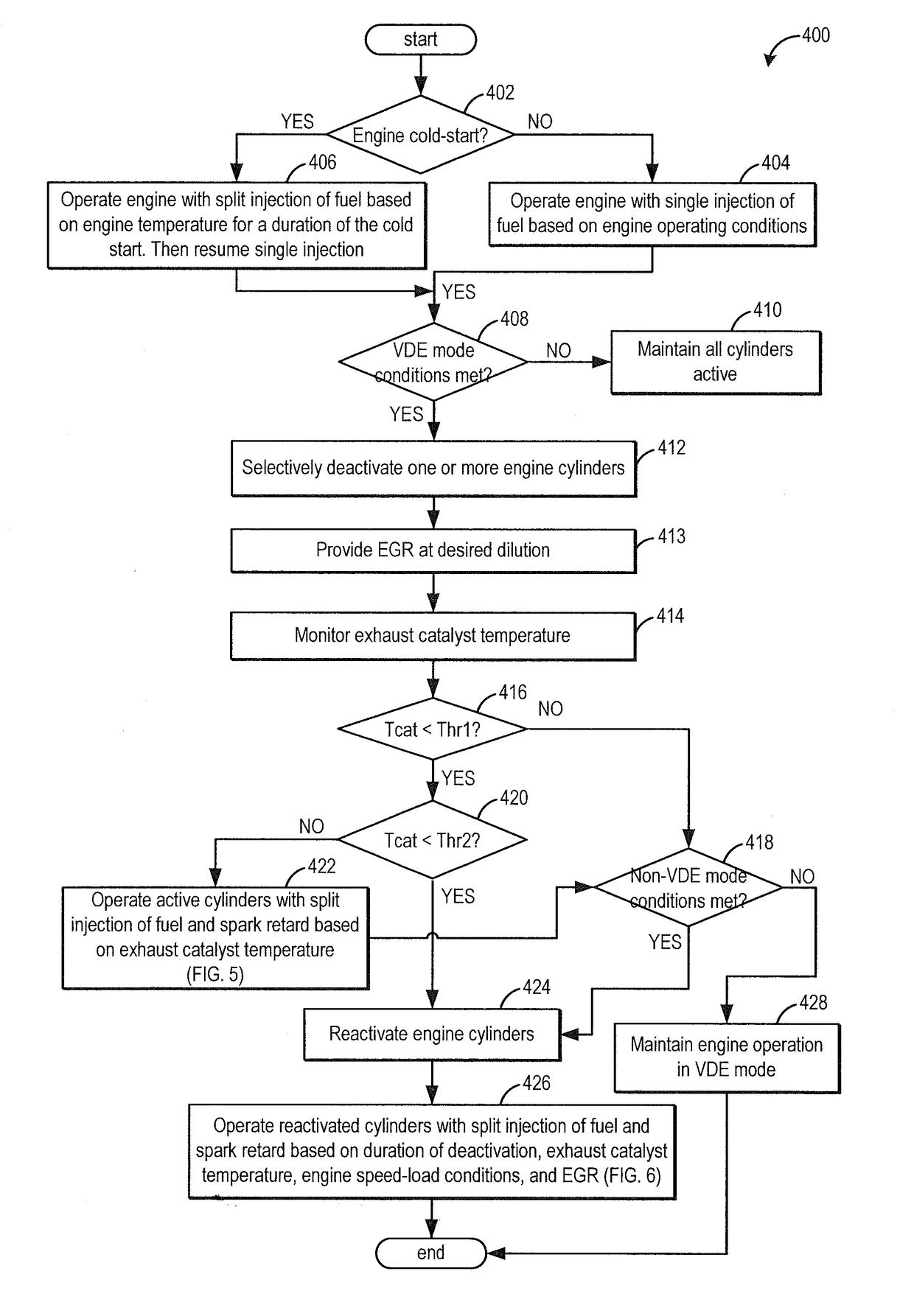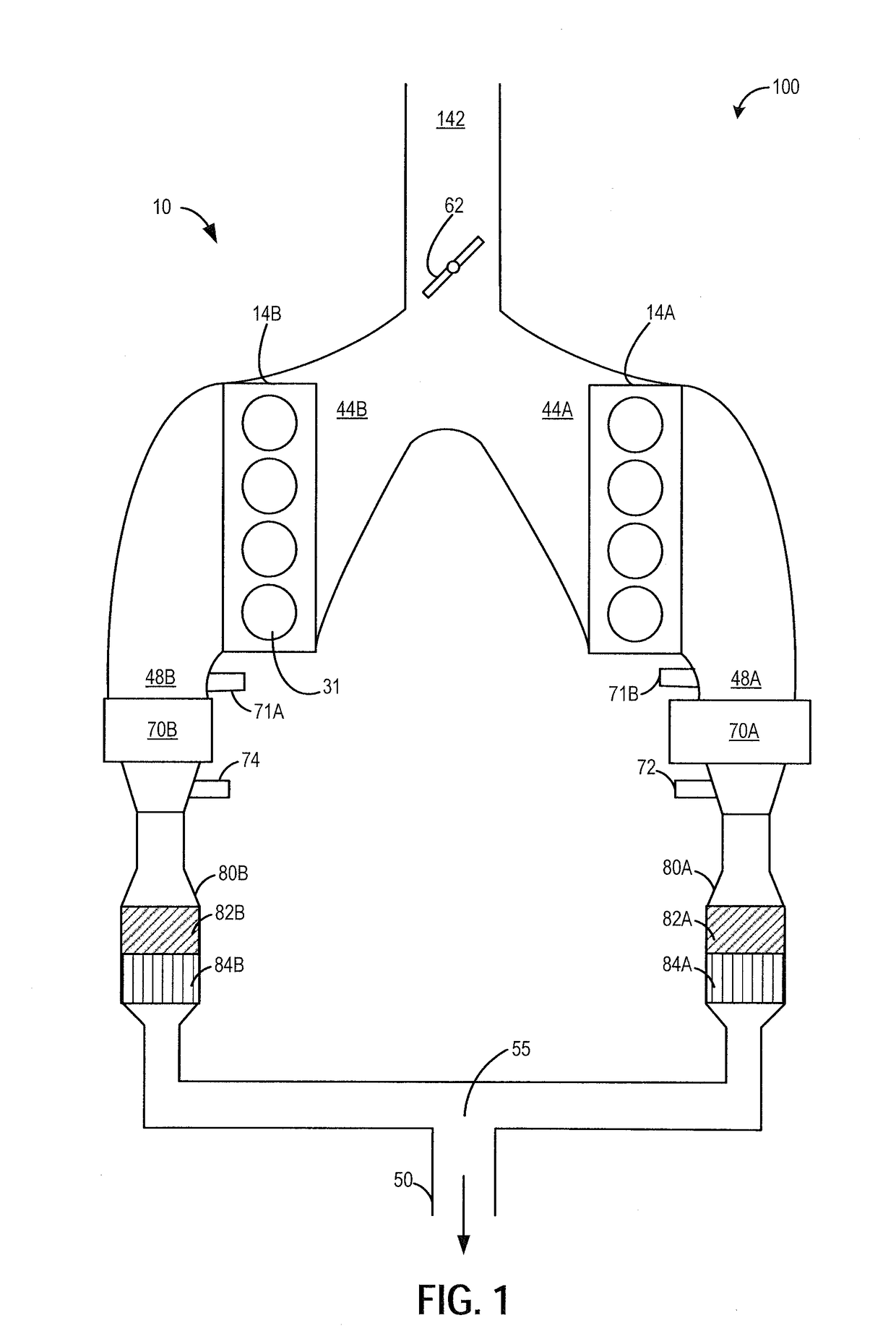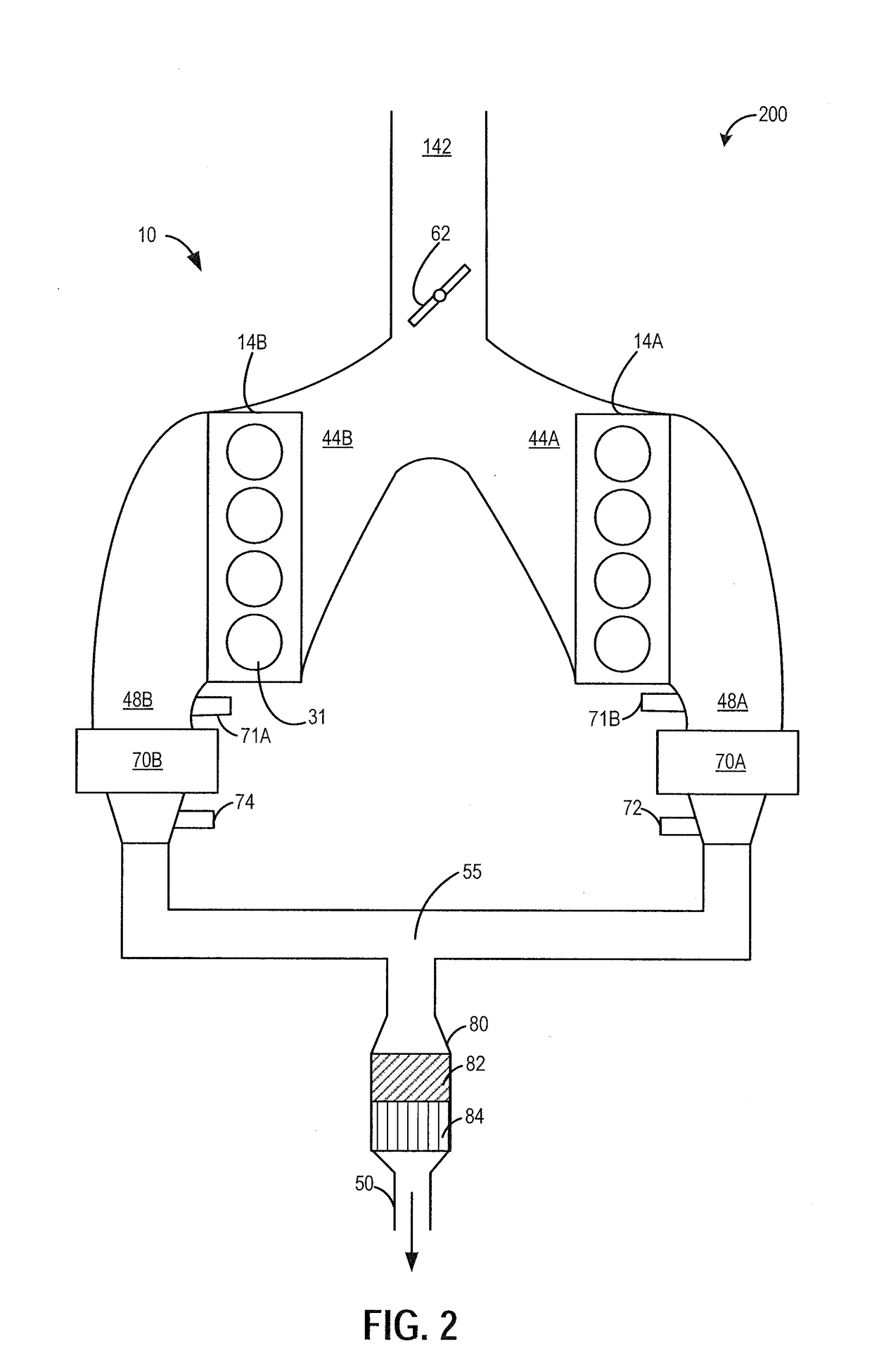Variable displacement engine control system and method
a control system and variable displacement technology, applied in the direction of electric control, ignition automatic control, machines/engines, etc., can solve the problems of reducing fuel economy, degrading engine operation, reducing operating temperature, etc., to achieve rapid recovery of temperature and catalytic efficiency of exhaust catalysts, increase exhaust temperature, and increase fuel economy
- Summary
- Abstract
- Description
- Claims
- Application Information
AI Technical Summary
Benefits of technology
Problems solved by technology
Method used
Image
Examples
Embodiment Construction
[0018]Methods and systems are provided for adjusting a fuel injection profile when operating a variable displacement engine, such as the engine of FIGS. 1-3. The fuel injection profile may be adjusted for active cylinders during a VDE mode of operation to expedite exhaust catalyst heating and thereby prolong operation in the VDE mode. Alternatively, the fuel injection profile may be adjusted for reactivated cylinders during a transition from VDE mode to non-VDE mode of operation to reduce torque disturbances and combustion stability issues while improving exhaust emissions. A controller may be configured to perform a routine, such as the routine of FIG. 4, to shift a fuel injection profile for selected cylinder from a single intake stroke injection to at least a first intake stroke injection and a second compression stroke injection. For example, as shown at FIG. 5 and FIG. 7, the controller may shift the active cylinders during a VDE mode to split fuel injection. As another example...
PUM
 Login to View More
Login to View More Abstract
Description
Claims
Application Information
 Login to View More
Login to View More - R&D
- Intellectual Property
- Life Sciences
- Materials
- Tech Scout
- Unparalleled Data Quality
- Higher Quality Content
- 60% Fewer Hallucinations
Browse by: Latest US Patents, China's latest patents, Technical Efficacy Thesaurus, Application Domain, Technology Topic, Popular Technical Reports.
© 2025 PatSnap. All rights reserved.Legal|Privacy policy|Modern Slavery Act Transparency Statement|Sitemap|About US| Contact US: help@patsnap.com



